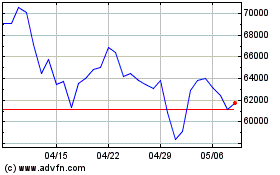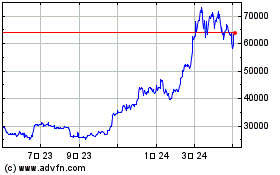The Idea Of Value In Crypto
2018年12月5日 - 7:11PM
ADVFN Crypto NewsWire
Summary
The idea of value has been continuously evolving in the world of
cryptocurrencies.
More and more models are being proposed that aim for better
linkage between adoption and value.
The continuing fall in cryptocurrency prices is gradually
unearthing more interesting opportunities.

Bitcoin Close Price data by
YCharts
The crypto market has been hitting new lows over
the past year and the recent plummet in price hasn't helped.
Everything is a stark reminder of the volatility and speculative
nature of cryptocurrencies. However, that hasn't stopped progress.
Many emerging solutions are using blockchain in an interesting
manner and adoption is slowly moving forward. The landscape is
rapidly evolving and the face of crypto will quickly change over
the next few years. Current protocols are getting improvements to
address shortcomings (e.g. rootstock for BTC), while competing
technologies spring up to target crypto needs. Just this year
alone, the number of USD stable coins has been multiplying like
rabbits (e.g. Gemini dollar, Stronghold USD, USD Coin, True USD,
and several others). Meanwhile, corporations have been announcing
partnerships with private and public blockchain solutions on a
regular basis. But a question that often comes up is “What is the
value of a digital currency”?
Looking for value:
The simple answer is "value is arbitrarily
defined". In the current state, a cryptocurrency’s value is pure
speculation and is guaranteed only at the time of transaction.
While arguments based on supply and demand, scarcity, store of
value, etc. have been made, it doesn’t change the fact that there
is a general lack of intrinsic value for a significant number of
digital assets. At one point, some have tried arguing that the cost
of mining could serve as a baseline indicator of value for mineable
currencies; however, that has been shown to be false in the current
bear market, where miners have been reportedly scrapping mining rigs. Security
tokens aside, many believe that the current coins and tokens don’t
carry the same sense of ownership and/or returns that equity, loans
and other assets may offer. To address this problem, ideas from
other areas have been re-purposed to create economic models, or
tokenomics, for crypto assets. These tokenomics were meant to
theoretically craft an economic system that would create value as
adoption increased.
Generating intrinsic value:
Tokenomics are continuously evolving, and there are
interesting ideas being proposed and implemented in order to create
value. Solutions have long since expanded beyond the idea of “this
token/coin is good for smart contracts and transactions”. Moreover,
there are more and more solutions that have started pegging some
aspect of their ecosystem to fiat prices as opposed to pricing
everything solely in their native currency. Below are two high
level examples:
- A secondary stable token is paid out to node holders that
provide relevant services. The secondary token can be exchanged for
tradeable currencies at a pegged fiat price.
- Storage of data costs a given fiat value that is to be paid
using native coins. Coins are redistributed to storage nodes. Only
a single coin is used.
The first case has a clear yield that scales in
line with adoption. In contrast, the second case has a more dynamic
system, with the main token's value being affected by speculation,
adoption levels, available liquidity, and other factors. Further
elaboration would require discussing project details and provide
additional context, which is beyond the current scope. More
importantly is the fact that models are being created to give
cryptocurrencies some form of value that scales more predictably,
relatively speaking, with adoption. Identifying such systems may
lead to interesting value propositions and opportunities. However,
whether a coin is necessary or not is an entirely different issue
and will largely depend on the problem being solved.
Final remarks:
The idea of value has evolved significantly from
what it once was in the world cryptocurrency, and it’s important to
keep this in mind. Novel economical models are being defined, and
refined, to better link adoption to value. While still highly
speculative, it provides a far better idea on how value can be
generated in the long run. With the pull back in market prices over
the year, along with the recent plummet below $4,000, interesting
opportunities have been emerging. Even with solid tokenomics,
cryptocurrencies will still likely be extremely volatile, and
there’s no guarantee on which ones will survive the eventual cull,
so the risk factor is certainly worth bearing in mind. Lastly, many
seem to believe that adoption will be the next big driver of a
crypto bullrun. At that point in time, viable ecosystems with solid
economic models will likely stand out readily from the crowd.
Source:
Seeking Alpha
Bitcoin (COIN:BTCUSD)
過去 株価チャート
から 3 2024 まで 4 2024

Bitcoin (COIN:BTCUSD)
過去 株価チャート
から 4 2023 まで 4 2024
